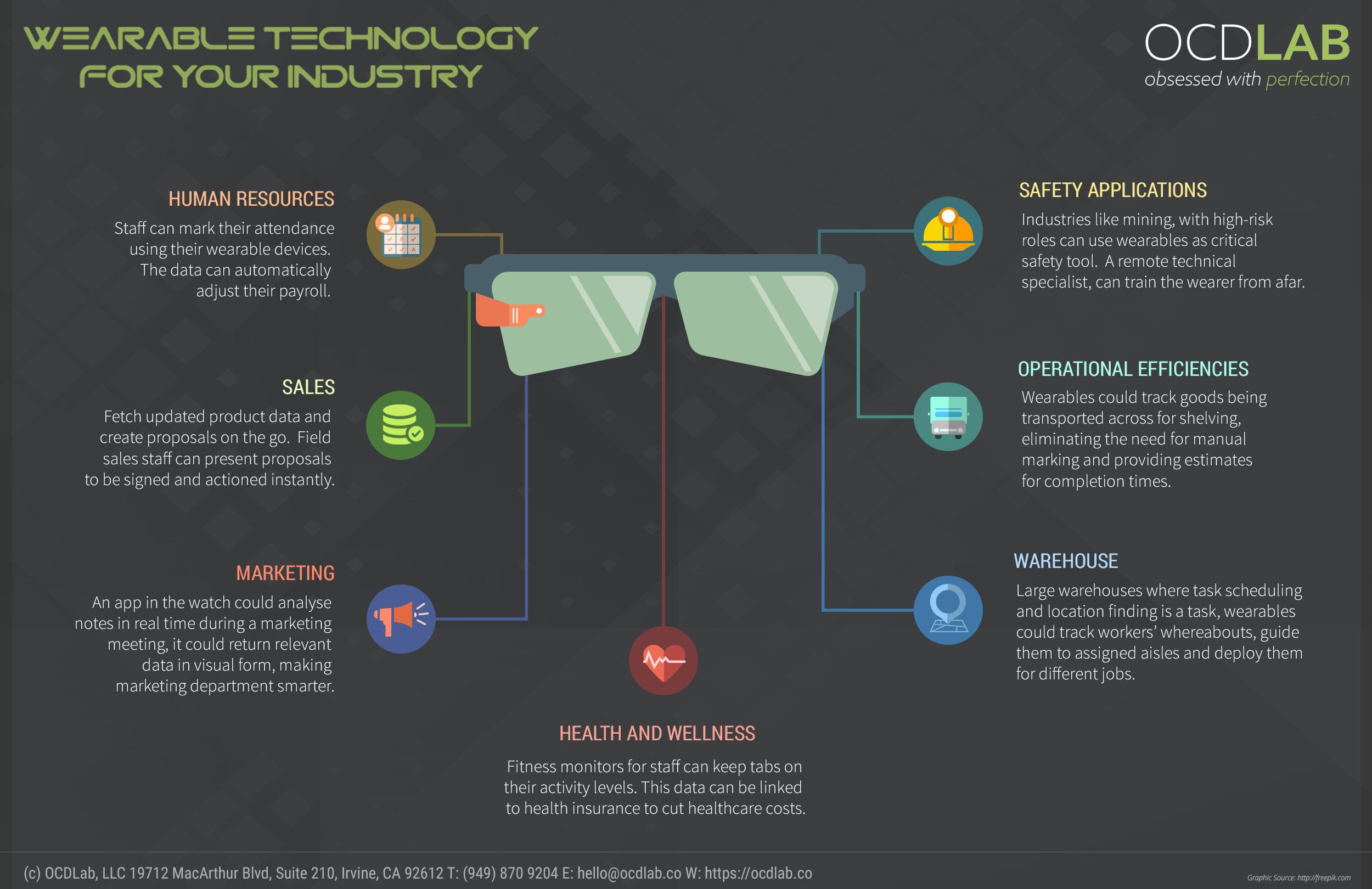If you are an entrepreneur, chances are you already know that startup world is tricky! More so with the app startups. Knowing when to take the next step can be nerve-wracking and doing the due diligence is a very important first step that a lot of entrepreneurs miss out. How do you know if your great idea will disrupt the market, or… blow up in your face?
Well, it can go either way, but there is some groundwork that you can do at a minimal cost (or even free) to validate the ideas before investing your hard-earned real dollars into it. The first thing that you might wanna look for is, yep, competition!
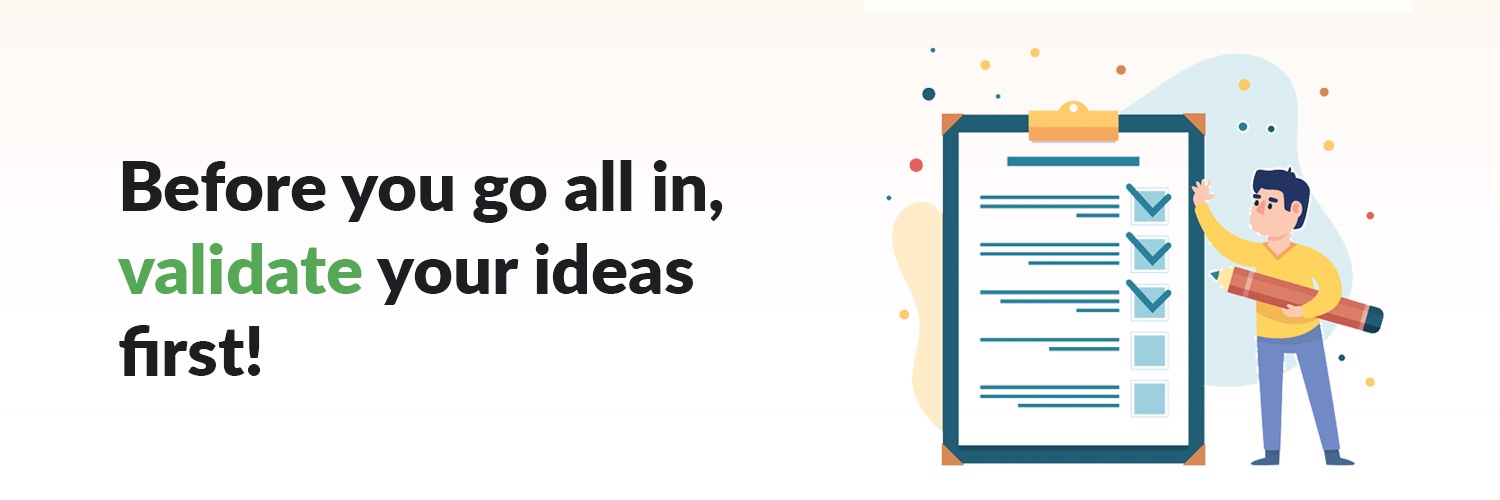
The size and scale of this search will differ from industry to industry. Many apps aim for a niche to claim an untapped market, while others may be perfectly happy brawling it out with a dense space. Busier industries will have active communities writing reports and offering their own public research, potentially giving you a better view over the cliff, so to speak.
For now, we will be focusing on the little guy who needs to know what’s in the fog.
So, how and where do we start the research?
The Research Stage
The research stage is usually a three-step process, but as you can imagine, those three steps are not completely straight forward.
- First, we need to know how to define our product and audience. In ther words, what keywords can be associated to this product.
- Second, we will need to discern how our audience is likely to search, and when. In simpler terms, if you were looking for a product that you are trying to build, how would you search the good old world wide web.
- Finally, we use that information to search for direct and related information over and over until we are satisfied with our scouting. So, you see, these are just not three steps, you are cycling through these steps multiple times to make sure you have left no stone unturned.

Let’s use an example.
Your new app is going to help shoppers determine where they can get the most deals for a specific diet. This will give us, the Diet Name (We’ll go with Taco Diet, because I wish it was real), Deals, Cheap, Cheapest, Best, Weight Loss, Lose Weight, Lose Fat, Skinny, Lose Size, Beach Body, Healthy Nearby, Near Me, New Diet, Diet, 2019 (or relevant year), Android/Apple etc.
Allow me to introduce something that everyone should have in their toolbox: Google Trends
If you have never used it, this is a researching miracle, allowing you to search every bit of data you could need on any term you can think of. Not only that, it gives you related terms, related topics, and generally gives you the insight you may never have even considered. The idea is to come up with as many possible relevant terms as you can: if your customers can find them, you have a competitor. Remember to keep in mind common misspellings. If a simple typo can get you an edge, it’s worth knowing about. If you plan to do Split Testing down the line (Also known as A/B Testing), make sure to follow up on those ideas as well.

We know our audience for this Taco Diet will likely have tried similar products for other diets. So, if for example, someone wanted a version of the Weight Watchers app for the Taco Diet, they might search for this as well. Think like your customer, try to put yourself in their position, and think what they would be looking for.
Note: When we are searching Google, don’t forget quotes around the terms you specifically want to search; otherwise it will merely search by all of the words in any order.
With this done, we should have found at least some of our competition. Now it’s time to do it all over again. Ideally, you would want to make sure you are looking through results others may not even think to go to, such as going 7 or more pages deep in a Google Search. You may just find that your competition exists, but never optimized their web presence.

If you are trying to pursue an idea that involves a smart device or hardware (Internet of Things), there is another step you would want to try before wrapping up this first part. Let’s say we’ve gone through, and found absolutely nothing. How do we know for sure? If you already searched every term you can think of, there’s always the option of searching through public record databases. While this won’t be fast, you may be able to find companies and patents registered under specific names or track down companies with no online presence. Offline businesses are rare these days, and unlikely to be able to complete outside of their local area, if that. It’s very likely that you may not have any effective competition at launch in this case.
The great thing about all of this is that it’s free, or at least mostly free. Researching your competition with a reasonable degree of accuracy is far easier than it’s ever been, and the internet is just chock full of fantastic resources to help out in this regard. Below are a few that may help out for your specific situation.
Validation
Now that we know our enemy (so to speak), it’s time to know ourselves!
For this, we will be using the data that we found in the first part of our search to get to know our customers better, as well as creating landing pages that will be used to gauge interest and get our early adopters on board.
The Landing Page
Landing pages are simple, and they are going to serve as the funnel for all of the information above. There are many tools out there to make one with no hassle these days. While you can use functionally free options hosting and design options like Wix and WordPress, they are also going to be entirely manual when it comes to funneling your traffic, and also will be absolutely buried in the search results without a custom domain to transfer to. We will ideally use an automated system, such as Airstrip.

Now, this tool is amazing. First off, if you have never made a landing page before, it has the entire template ready to go right as you sign up. All that you need to do is go on and put your product information in there. You assign your pictures, put your logos, and describe your product in a few short blurbs.
From there, all we need to decide is whether this will be a sales page, an information page, or a funnel page. As before, everything is already there; sales pages can put their pricing and links, information seekers can put a questionnaire, and a funnel page can direct your customers to download your new app.
You can even run a split test using this, creating two different variations of a similar landing page, and tracking the results of both for data. This can be crucial in determining which path to take with your product. It should be noted that while using their default domain can still technically be viable, due to comparatively fewer people using this over something like Wix, but a custom domain will usually be needed to get those first page results we’re hoping to nab. Remember that once you are on the first page, you generally will get more and more cemented there as your relevance to your search terms grows through Google’s system.

APPS START-UPS, DO'S & DON'TS
The questionnaire
Asking questions can be hard. Asking good ones may be difficult. Asking wrong questions can leave us sunk. Then what do we put in our questionnaire?
Thank goodness for the internet once again. While questions will vary from project to project, there is a site that can actually set up with already made questionnaires for just about anything out there, and like all of the above, it’s free to use to some extent. Start with industry standards like Surveymonkey or its cool buddy Typeform. You will more than likely find what you need on here. If not, they also have templates and all of the information you could ever need on making a successful questionnaire.

So now we have our Landing Page mostly pieced together, we have out Questionnaire ready to hunt down that sweet, sweet data, and maybe we put a slightly different version out there just to test the waters with some different crowds. Now we need to make sure our pages are using the tags we found to be popular earlier, and we’re ready to launch all of this!
See? It wasn’t that hard, and once you have it all down, you can be out and researching that new project in as little as an afternoon… though maybe spend a bit more time just to be sure 
Good Luck, and good searching!
Book a free consultation with our team if you are looking for a technology partner to take your startup to the next level.
The post How to validate your app ideas? appeared first on OCDLAB.
]]>Can you patent an app idea!
People often tell me, ideas are dime a dozen, and it’s the execution that really matters. That’s a fair point, however, it doesn’t change the fact that we still have a very personal stake in keeping our ideas secure. They might be our livelihood, our reputation, or our way to advance to where we want to be. It also doesn’t change the fact that getting a project out before anyone else will always give it the best shot of success.
So, how do you separate what you want to do, and what you should do to protect your app idea? How do you know what the cautious approach even means in this situation?

Assessment
Let’s take a step back for a moment and assess the idea to begin with. What kind of feedback have you received for your idea? I know it is a chicken and egg story! How the heck do I get feedback without sharing my idea, and how do I protect it, if I am sharing it with anyone and everyone?
It is important to ask the right questions to refine the concept and get to the next step in the process. First of all, you need to think, what level of protection your brain child will need. You may want to let go of the need for secrecy a little if you want to get good feedback for your project to get better. For example, if you are discussing it with a closed group of subject matter experts or a potential development partner, you should trust their expertise and reveal just enough information, so that they can give you meaningful suggestions.
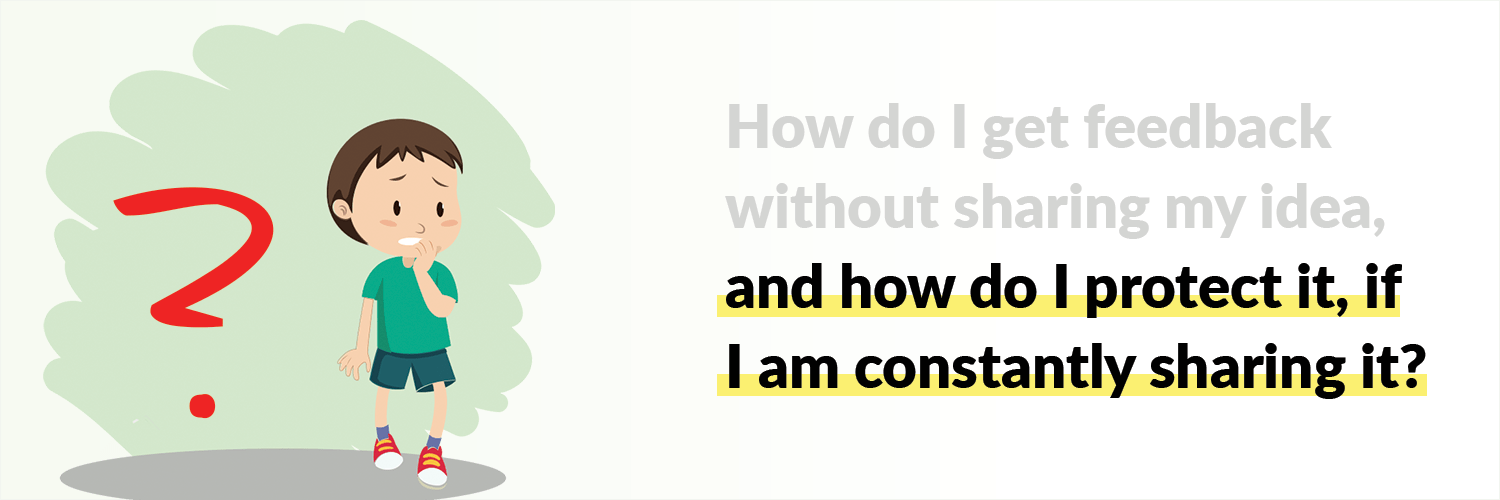
Think of it as fertilizer. Every time it stinks to hear something, it’s just helping things grow!
Everyone will copy me, what do I do?
Okay, let me put it this way, ideas are like a Toddler’s Crayons. The first toddler that realized that crayons can be used to write on walls must be ecstatic, and may well want to hoard all of the crayons. The other kids in the area are busy playing with cars and stuffed animals. They would either have to go through the same process of figuring out the idea (Seeing the crayon, figuring out that it writes, and then discovering that the wall is a blank canvas of endless possibility), or see it in action to think of using them to draw, rather than attempt to eat them. That first kid will have gotten his work out there long before anyone else, and will usually be the first one associated with colorful scribbles on the wall.

The point here is that if your idea is original, your only early competitive threat comes from others that may have thought of the same thing at the same time. You will usually be able to get your idea out there first, and it’s better to make that impression GOOD.
The NDA
A piece of advice that sometimes gets floated out is to make all involved sign an NDA. After all, it’s what all the big guys out there do, right?
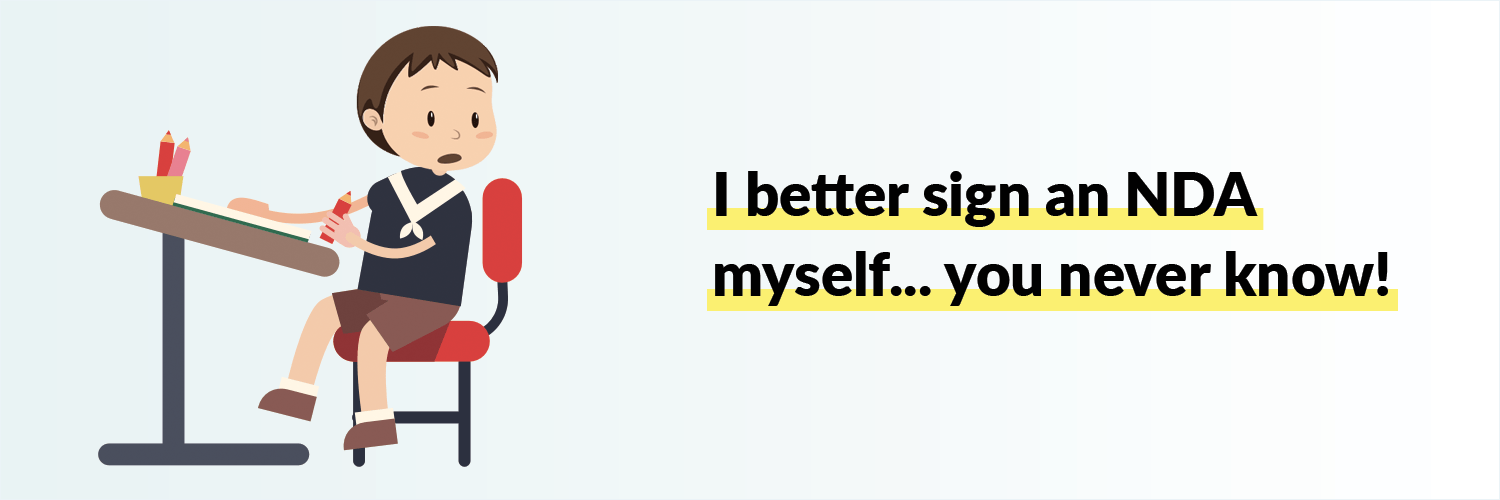
Non-Disclosure Agreements should really be saved for those projects when all involved are aware of what made the original premise work, and the Idea Maker in question has an improvement that will actually improve or mix up the established format. It’s a potentially off-putting barrier attempting to block a threat that doesn’t exist yet. If you are asking everyone to sign the NDA, before uttering one word about your project, more than often, you are losing the valuable insights from those people.
The Copy Train
All good things get copied, so naturally no idea is going to stay unique forever. Imitation is the sincerest form of flattery, after all! It just means you did good. So, keep expanding on that good idea! You will always have the early entrant advantage. Just make sure you are listening to your users and constantly improving your app.
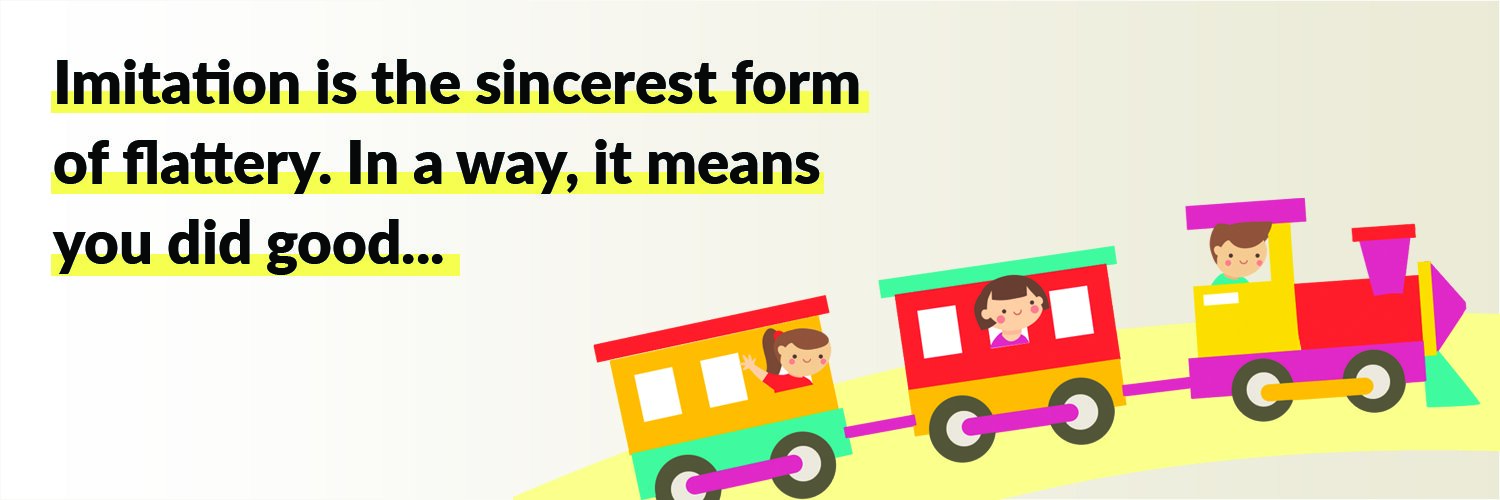
When do I use a Patent?
- Patents are for those situations when someone establishes a functional business, and needs to make sure no one steps in to directly copy their methods or ideas.
- If a startup has invested a large amount of resources into a project, and has direct competition threatening them, but are still able to file a Provisional Patent first, it would be worthwhile.
- If an established business is going steady, knows that they have others that can step and take part of their market, and have the spare capital to file, it’s a good call.
- If a business is new, and hasn’t invested thousands in research/development/time, or has no immediate and ruining competition, it’s more than likely going to be safe without a patent until it’s at least functional. Some might be ambiguous enough to never need one.
- Just remember that patents can stop someone from risking a lawsuit by copying you, but it can’t physically stop them from making a clone just different enough to avoid it.
Patent Types and what they do
Patents can mean a lot of things to a lot of people. To some, they’re a safeguard for their work, to others they can be everything from an obstacle to a needless expense or a trap, depending on how they’re used.
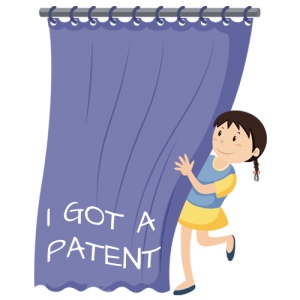 Legalzoom has a handy guide on the different patent types here, but in very brief summary, there are 4 types of patent.
Legalzoom has a handy guide on the different patent types here, but in very brief summary, there are 4 types of patent.
- Utility Patent – A Patent showing use and design of a system or device.
- Provisional Patent – A temporary patent used when you want a Utility Patent, haven’t quite ironed out the details, but also are worried about having the carpet pulled out from under you.
- Design Patent – Covers cosmetic and aesthetic improvements, in our case something like unique UI elements.
- Plant Patent – Not even remotely relevant unless you’re managed to make a dandelion with a touch screen, though I’m sure there’s a market for that, if anyone’s interested.
Patents are an expensive process, and more often than not are simply too complicated and cumbersome. Without counting time investment, we’re looking at prices ranging from $700-1100 or more just to file, and that’s not the kind of expense you want if it’s not doing what you want it to.
Small and Steady
Successful businesses don’t just pop into existence (Unless you count multi-million dollar corporations creating a small company for the hell of it, but that’s a debatable technicality).
Any idea needs time to form, so making it easier to build based on feedback. This doesn’t have to be months or years, we just need that first functional MVP, which can then get our ideas out there, which can, in turn, get more feedback, which can help us churn out those little updates that make everything look better.
Build your core idea, make it work, and worry about protecting those theoretical millions after proving the idea work. Good luck!
The post Can you patent an app idea! appeared first on OCDLAB.
]]>How do you turn an idea into an app?
You have been thinking about this for months. You’ve talked to your people, and you know this App is going to change the world. You’re motivated, and your friends are cheering from the sidelines, but now isn’t the time to realize that all of that hype has led you blindly face planting straight into a plate of humble pie.

So, how do you prepare yourself early to avoid running into a brick wall down the road? The answer for every startup will be unique, but there are still some solid ways to keep yourself and your baby project safe and steady.
Let’s get started.
Know what to ask
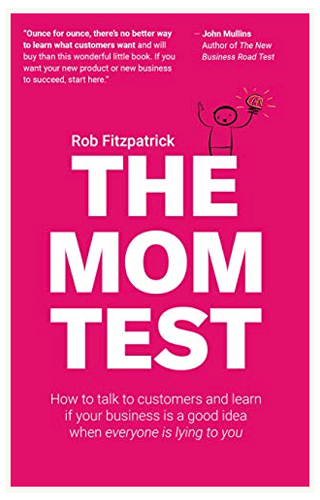 Before we get into making our product, we first need to know if it’s even going to be viable. Talk to people for initial feedback, read books on the subject matter and try to evaluate if your business is a good idea in the first place.
Before we get into making our product, we first need to know if it’s even going to be viable. Talk to people for initial feedback, read books on the subject matter and try to evaluate if your business is a good idea in the first place.
“The Mom Test” by Fitzpatrick, Rob, does a great job in nailing this crucial step perfectly. To briefly summarize:identify what problem needs solving first and foremost. You may well have been asking people for their opinions, without probing exactly what they even need a product to do.
The most lovingly crafted boat in existence won’t be much good if your customers are trying to find a good way to get across the desert.
“The measure of usefulness of an early customer conversation is whether it gives us concrete facts about our customers’ lives and world views. These facts, in turn, allow us to improve our business.”
A good product alone may not necessarily have a use. Find a Problem first, then create a way to fix it.
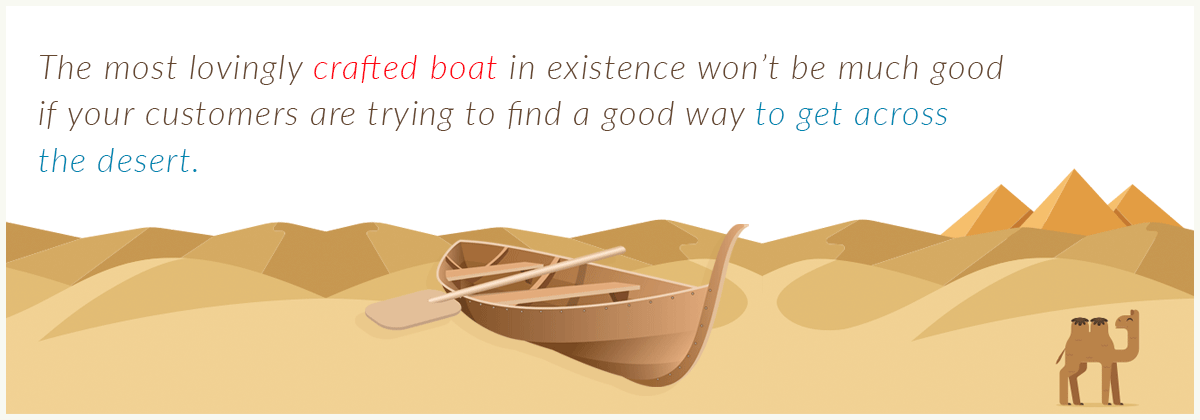
Do you believe in your product?
This isn’t a trick question. Seriously ask yourself if your idea is something you are ready to spend long days and sleepless nights bringing to life.
The development road is long, and often blind. Problems will happen, bugs will happen, you need to be ready to roll with the punches for a good while, and if you don’t believe in this idea, you will feel those hits keep on coming. It’s been said a million times for a reason: You are your Product.
Believe in your idea, believe in yourself, and others (Such as investors, those sound important!) will believe
in you.

Start small, start functional
Now that you know and trust your idea, it’s time to get that first marketable build ready. You may be familiar with the term MVP, or “Minimal Viable Product”. In short, once you know your idea and your market, it’s time to boil it down to a set of features that would be acceptable for launch. Quality in your core features will get those early adopters in, and those folks are going to be able to give you feedback on what works well, and may even drive some traffic to your app.
Focus on and iron out your Core Features, your full feature plan can be implemented as the app evolves.
Establish a foothold
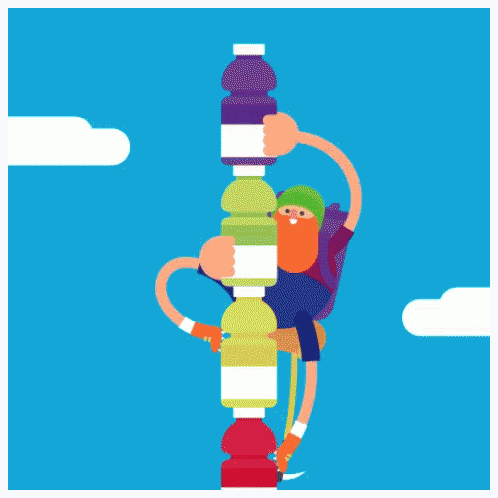 Now that we know our goal, we believe in it, and have a core set of features coming together, we need a platform to push off from. “But hey, my app is definitely going to secure funding to get onto 8 different platforms right from day 1, I know our scheduled release was 9 months ago, but you can’t rush quality!”
Now that we know our goal, we believe in it, and have a core set of features coming together, we need a platform to push off from. “But hey, my app is definitely going to secure funding to get onto 8 different platforms right from day 1, I know our scheduled release was 9 months ago, but you can’t rush quality!”
Going multi-platform could be a huge boon…. eventually. More likely, you will wind up fixing bugs and reworking features several times at once in completely different environments.
Keep your build open to expansion down the line, but be patient. Once your idea is actually functional one platform, then it’s time to use that foothold to expand to other markets. Until then, your resources are better spent on polishing your flagship.
What about funding?
Before we get started, there is a handy guide out there that I would recommend grabbing a copy of HERE. The author made a free version to help out those who want to get a better understanding of an Investor’s mindset.
First, your project may not even need funding. Yes, more capital is always good, but you really should try to cut overhead before expanding your actual budget or incurring any debt. If your project is one with limited costs, and looking like it will be able to start becoming profitable at or near launch, feel free to just bookmark this until it actually becomes a necessity.
 What about when you do need some financial backup? How do you impress that big scary money dragon that everyone always talks about?
What about when you do need some financial backup? How do you impress that big scary money dragon that everyone always talks about?
It’s far easier to get backers behind a proven team, that part is obvious. It’s often misunderstood, however, that an idea will “sell itself.” In fact, your ability to cope with the ups and downs of your business, as well as adjust accordingly may be their biggest factor in determining if you get the help that you may need.
Think about it this way: You need to across some stormy waters. On one hand, you have someone who got their hands on a fancy boat, but spent 30 minutes digging through a manual to find out where the keyhole is to start the dang thing. On the other hand, there’s a boat that’s clearly seen better days, but you’ve heard that it’s owner is a solid navigator, and you know they can handle themselves if need be. Who would get your money?
Try to keep your goals realistic, meet your deadlines, and you will have an easier time getting those investors when you need them.
While we’re talking about Investors, however….

Growth comes first.
Product first, Profit second
Next, we come to another scary rabbit hole, however, this is one even the big guys make with surprising regularity.
You may be thinking that the only thing investors care about is Money, right? No. Not at all. In fact, most successful investors care about long term stability first and foremost. As such, remember that focusing on only profits may actually be what scares off investors down the road. This focus generally tends to the deterioration of core features, a negative customer experience, and will ultimately just lose Brand Value in the long run.
Know when to call it quits
 Lastly, your idea needs an Expiration Date. You need to pick a concrete date as the finish line for your app. This helps to home in on making your MVP, knowing what to cut, and when. All of this will assist in avoiding the unfortunate road to development hell, and heartbreak that comes with it.
Lastly, your idea needs an Expiration Date. You need to pick a concrete date as the finish line for your app. This helps to home in on making your MVP, knowing what to cut, and when. All of this will assist in avoiding the unfortunate road to development hell, and heartbreak that comes with it.
Pick an End Date. Stick to it.
The Road ahead is complicated, unique, but rewarding.
Now that you know how to avoid many of the major pitfalls of app development, it’s time to put them into action. Ask the right questions, find your niche, make a plan, believe in it, and keep your goals realistic.

If I can offer one last piece of advice, just be cautious. No one can say when a sudden complication throws things into chaos, but mentally expecting this helps lessen its impact.
Development is unique for every project, but being pragmatic will help to keep you going steady, and eventually, profitable. If you need any help with polishing your app idea, book a free consultation today.
Good luck!
The post How do you turn an idea into an app? appeared first on OCDLAB.
]]>Is React Native future of app development?
Well, this is not an easy question to answer. Developers are certainly bullish about its future prospects. And Facebook, React Native’s creator, would have you believe they’ve solved every app development problem that has ever been from this point forward, unto eternity. But is it that simple? Before we can hazard a guess about React Native’s future we need to understand why it exists and what problem it was designed to solve. And before we can do that, we need to learn about native application development.
Native Applications
Native applications are apps written specifically to take advantage of components unique to the platform the app is being developed for. iOS and Android, the two main players in the mobile app market, are completely different operating systems. Their UIs (user interfaces) are very different, as are many of the base assumptions about content display and functionality built into their code bases.
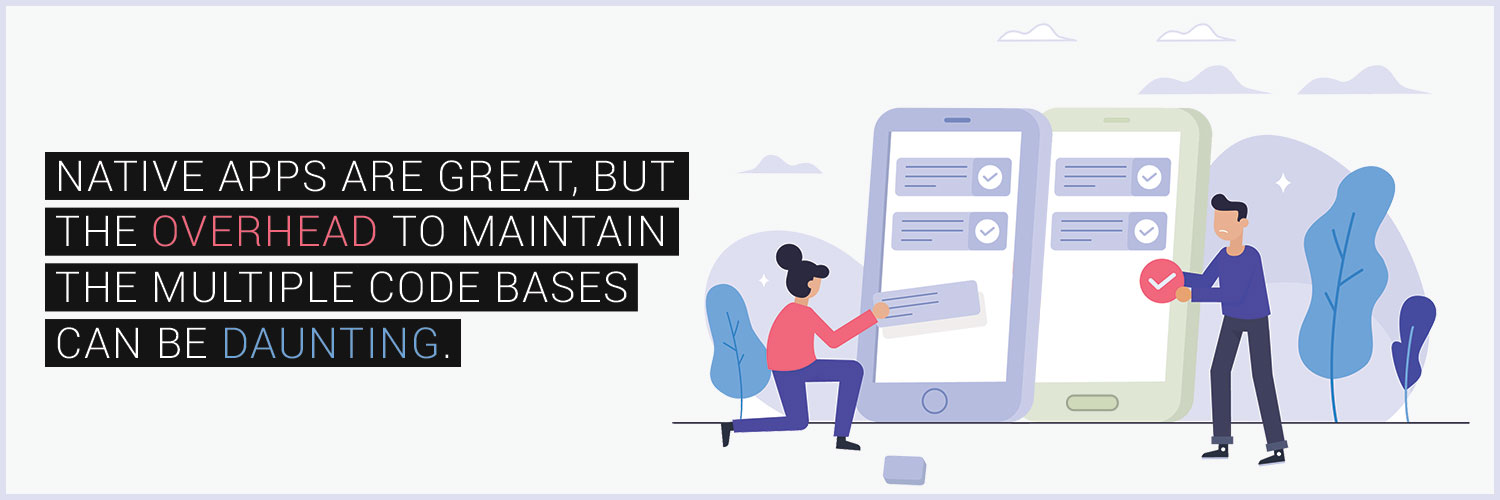
This means that native apps will only run on the mobile operating system they’re developed for. A native Android app uses Android-specific components and language, and won’t run on an iOS device, and vice-versa. In order to develop an app that runs on both platforms you essentially need to develop the app twice, creating and maintaining two separate code bases in two different languages. This is a terribly inefficient system which is why, in the early days of mobile app development you often found apps supported by one OS or the other but not both. Developers simply didn’t want the hassle involved with porting their app over to the other environment.
Cross-Platform Development
In answer to the challenges presented by maintaining two separate, OS-specific code bases developers began creating hybrid apps, apps that ran on both platforms but shared a common programming language. To accomplish this all of the OS-specific tasks had to be handled by a go-between, a container that the app was nested inside of. Remember that iOS and Android have different ways of doing pretty much everything. This container bridged the gap between what the app was attempting to do and how the specific operating system expected you to do it. The container was a translator of sorts, taking generic instructions from the cross-platform app and translating them into OS-specific actions.
One of the most common ways of accomplishing this early on was to develop a web app, an app coded like a website, using HTML, CSS and Javascript, which would normally be served up through a mobile web browser. But instead of serving it through a normal browser like Chrome or Firefox the web app was served through a webview, a native app shell that functioned like a browser but interfaced directly with critical UI components on each mobile platform. This allowed the user the experience of running a native app while all of the heavy lifting was being carried out by what was essentially a web app.

This was a functional solution but it lacked a certain amount of finesse and consistency that developers usually require. The Ionic framework, which uses HTML5 along with CSS and Javascript, was developed to help rectify some of sticking points of the web view strategy. Among others, Ionic replicates all of the standard UI elements for both iOS and Android, allowing developers to focus on their app instead of working to make their user interface consistent with both platform’s design standards.
These hybrid approaches drastically reduced the labor costs involved in cross-platform development, but it was not without problems. Having to effectively run real-time translation between what the app is trying to do and how the OS expects things done reduces run-time speed and efficiency. These cross-platform hybrid apps often struggled at feeling like fully native apps. There was always the potential for buggy and sluggish performance. Hybrid apps solved the problem of cross-platform development but couldn’t escape the fact that they were, at their core, a hack. What was needed was a development tool that allowed a single codebase which behaved like a native app in both environments.
Enter React Native
React Native takes a novel approach to cross-platform development. Instead of saddling an app with messy, real-time translation duties like you find in hybrid apps, React Native generates fully-compliant, native code for multiple devices off of a single code base. No container program is needed to translate between the app and its environment because, using a single language and a single set of instructions, React Native creates a native iOS app and a native Android app. This is a huge boon to developers looking to create native applications for multiple mobile operating systems. It lets them focus all of their efforts on writing the app, wasting very little time making it run everywhere it needs to.
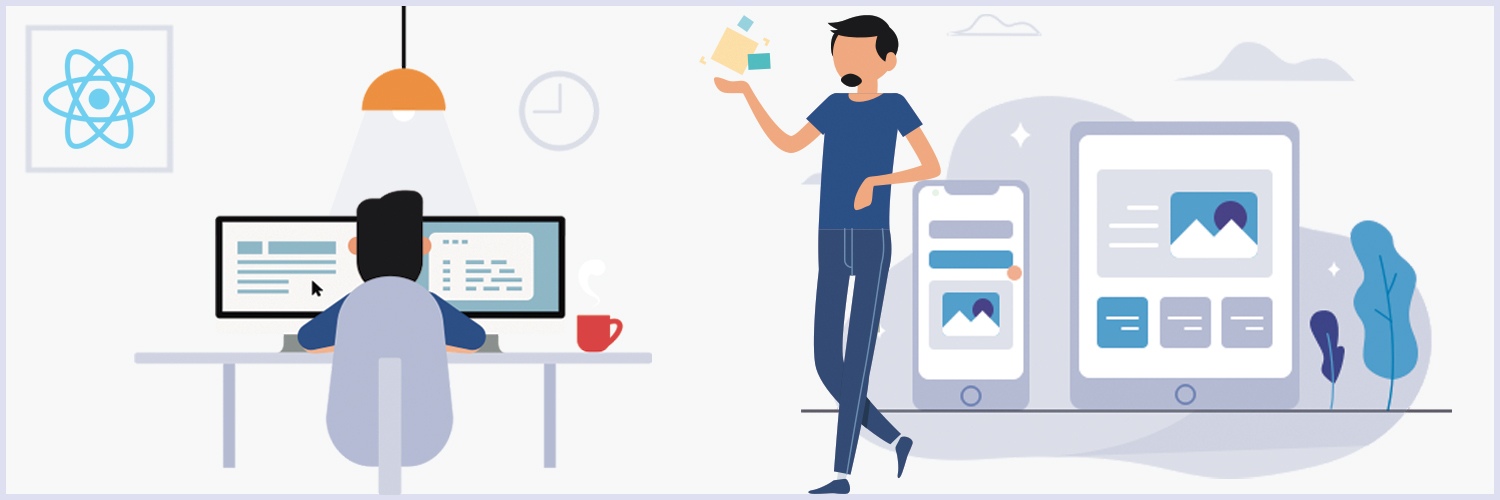
Apps built using React Native are ALMOST native apps. They can’t be called truly native because they aren’t developed using fully native techniques, but the final output uses exactly the same building blocks that true native apps use to interface with the device they’re running on. This means they are indistinguishable from native apps in the most meaningful ways. Developers can create native apps without writing a single line of code in the native environment. This optimized workflow is why so many developers consider React Native the future.
But this isn’t the end of the story. React Native certainly has its detractors, it’s own functional problems, and several other persnickety issues that could limit its viability going forward. For one, there’s no guarantee that Facebook will continue to develop and support the package. It would certainly take some doing on their end to extricate themselves from the framework since their own apps are built with it, but it’s possible that over time they may sunset the framework and move to something else. The issue is that React Native is currently dependent on the support of a somewhat monolithic patron. However, this risk could be mitigated by recent announcements that Facebook is converting more of the framework to open source, meaning the wider development community will be able to develop and maintain the package themselves.
Facebook has recently announced large-scale architecture improvements and other modifications to improve the speed and efficiency of the framework. This seems to demonstrate a strong, ongoing commitment to React Native.
And there is a strong user community building up around it. This, paired with Facebook’s plans to open source more of the framework is a strong point in its favor. It could well be that in the future development of the package moves away from Facebook and into the public domain, which increases its future viability.
There are quite a few notable projects developed using React Native. Walmart’s app, Instagram, SoundCloud, Wix, UberEats, and AirBnB are just a few. Most of these cite the shared codebase and faster development times as the biggest benefits to making the change. However it’s interesting to note that AirBnB just recently announced that they will be sunsetting the package in favor of something else. Their decision, after two years of development, highlights some of the issues React Native developers face.
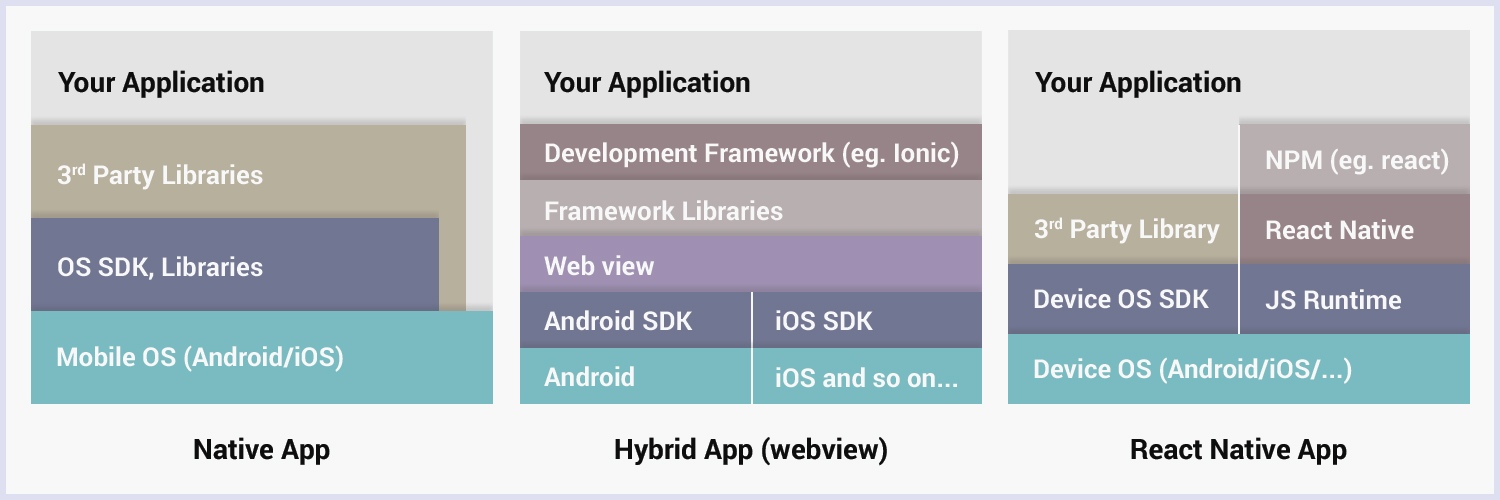
AirBnB is a very large-scale app deployment with a lot of moving parts. They were finding that, instead of developing once they were actually having to develop four times. They needed their core React Native team, teams to debug and handle the native side of the equation in both iOS and Android and a team to help develop the React Native architecture itself. As a relatively immature framework, a lot of effort had to be put into making React Native do what AirBnB needed it to. They were still saving time, but not enough to make up for the framework’s shortcomings as they saw them. This demonstrates how no one development strategy is right for every startup and that a variety of strategies must, and will exist as long as mobile development continues to develop.
If the package we ever to be discontinued you’d find a lot of developers up a creek without a paddle, save the one they’re bludgeoning themselves with for backing React Native. A development environment isn’t some ancillary, third party extension or library that can be replaced in your app if it’s discontinued. Apps developed using React Native are entirely dependenton it. If it were suddenly deprecated React Native apps would become nearly impossible to maintain and update without an extremely deep knowledge of every single component in the React Native architecture, which few developers possess. This is a consideration startups need to weigh before development begins using any development model.
React Native uses Javascript as its main development language. Many seasoned developers consider Javascript to be an unsafe, problematic language, and would much rather develop in heartier languages such as Java or Objective-C. It’s conceivable this insistence on Javascript could dissuade enough developers away from React Native in the long run to prevent ubiquitous adoption, although most hybrid models also employ Javascript so if your goal is to avoid it native development may be your best option.
It’s certainly possible that the model of app development spearheaded by React Native is the future of app development. But that doesn’t mean Reactive Native will be the tool people use. There are almost certain to be other development environments that imitate React Native and improve on the paradigm. It’s possible that React Native will wither and die in the face of a stronger competitor. Or an open source competitor that works like React Native but doesn’t require a centralized authority to keep the platform updated and viable.
Conclusion
Can there really be a conclusion? The trust of the matter is, no one can predict the future, but we can say with a reasonable amount of certainty given what we know now, that React Native, or some other development environment that uses a similar approach, is likely the future of app development FOR NOW. Until a better approach is formulated or until some major, game-changing pitfall is encountered, the React Native model for cross-platform app development is the best approach available for most modern developers. If Facebook continues to support and improve it and it continues to be adopted at its current rate it will be a major player in the development world for years to come.
Until it isn’t.
The post Is React Native future of app development? appeared first on OCDLAB.
]]>Build minimum viable or minimum awesome?
MVP or minimum viable product is one of the more commonly misunderstand concepts in lean entrepreneurship. And it’s no wonder. The term “viable” means different things to different people and “minimum” is often misinterpreted to mean, “requiring the least amount of effort possible”. This couldn’t be further from the truth. Creating a quality MVP requires quite a bit of research, planning, and effort. But, properly implemented, an MVP is one of the best methods available to entrepreneurs to deliver quality products that customers want.
How things used to be done (And why you shouldn’t do them this way anymore)
To understand what a minimum viable product is we first need to establish some context. Before MVPs became commonplace most start-ups spent their time, often years, developing in secret fully realized, fully functional applications, which they then released and attempted to sell.
This approach is, at first blush, quit rational. If you were building a car wouldn’t you make certain every single system needed to make the car function as optimally as possible was in place before you sent models out to dealerships? You wouldn’t include wheels but no engine. You wouldn’t install a driver’s seat but leave holes in the floor where passengers might sit. You would build a finished car and then attempt to sell it.
The problem with this approach is that, assuming you don’t run out of seed money before bringing your product to market, you have no idea whether the product you’ve built for your potential customers is the product they want. Developers are smart people, certainly, but they’re not mind readers. It’s entirely possible that after years of development that shiny new product they’re proudly parading out to customers is a lemon, a spiffy, feature-rich failure that no one wants and that no one will ever buy.
MVP to the rescue!
A minimum viable product attempts to short circuit this quagmire of uncertainty by getting something in front of potential customers as quickly as possible in order to learn as much as possible about exactly what sort of product these customers need.
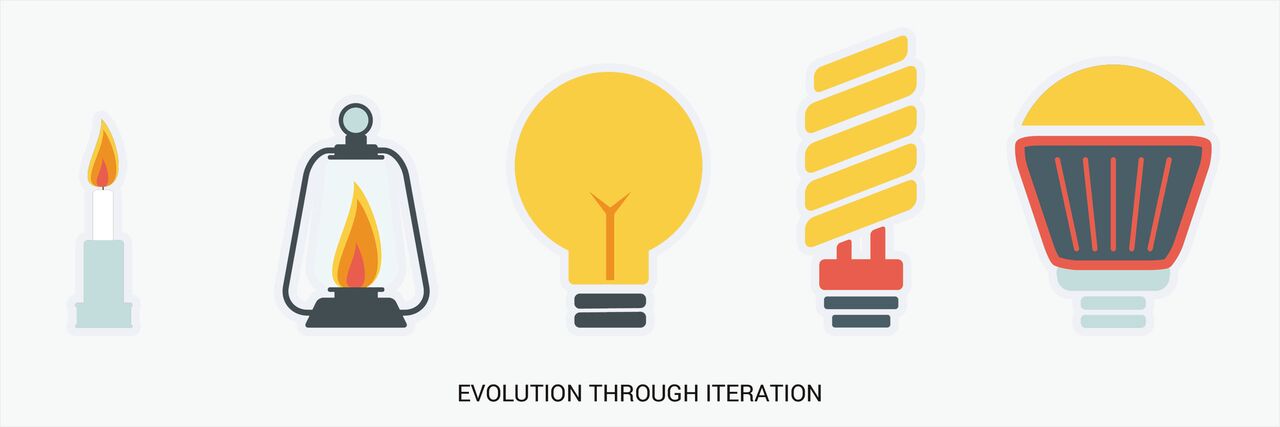
Put simply, the first version of your product doesn’t need to have every single possible feature implemented fully. It just needs to have a minimum subset of features that allow it to be useable by a portion of your potential customer base. This group, generally early adopters, is capable of understanding your vision for the product even in an incomplete form. As long as it possesses a rich enough feature set to allow it to address the central problem your product is designed to solve these power users are willing to overlook missing functionality. They’ll use your product and give you feedback. You can then use this feedback to improve your MVP, add features and then iterate.
Building a product through iteration
In order to understand how this works let’s return to our car analogy. Imagine they don’t exist and your start-up is trying to solve the problem of how to move people around quickly from place to place. Instead of designing an entire car from the ground up as we did earlier in the article we could instead develop a car MVP. We need only build a product with a minimum feature set to solve the proposed problem. We might take a plank of wood, screw axles onto the front and back and add some wheels.
Bingo! We have an MVP that moves people from place to place quicker than they could if they walked.
It’s car-like but not yet a car. It is a glorified skateboard at best. It fulfills the basic problem we’re trying to solve, so we roll it out to customers (no pun intended).
They buy it, try it out and give us feedback.
The early adopters generally like it but they tell us, among other things, it isn’t fast enough, it’s difficult to steer and they’re not fans of having to stand up.
We have feedback! We just learned very useful information about what our customers want without spending years building a fully realized car. So now we take that data and iterate. Maybe we add in a seat, attach the wheels to a steering mechanism and install pedals to allow faster movement. It’s still not a car. But Release. Get feedback. Iterate.
Are we done yet?
In the next version of our car MVP we replace the pedals with an engine. Release. Feedback. Iterate. We go from two wheels to four for increased stability. We enclose the passenger area to keep out the elements. Iterate. We improve the engine for greater horsepower. Iterate.
You get the idea. By the end of this process  we have a function-rich, fully realized car built incrementally with constant feedback from our end users. By the time our car is released we’re about as certain as we can be that it’s exactly what our customers want because they’ve been involved throughout the entire development process.
we have a function-rich, fully realized car built incrementally with constant feedback from our end users. By the time our car is released we’re about as certain as we can be that it’s exactly what our customers want because they’ve been involved throughout the entire development process.
In a nutshell, that’s MVP. Products are developed with only those features that are absolutely necessary for the savvy user to get it and give us feedback on how to proceed. After multiple iterations, each round improving existing features and adding new ones for testing we arrive finally at a finished product that does exactly what it needs to in exactly the right way. We know our customers will buy it because in a very real sense they helped develop it.
Should you build viable or build awesome?
We started this article off talking about how many people interpret “minimum viable” to mean, “requiring the least amount of effort possible”. This misunderstanding has led to some pretty lousy MVPs because their creators focused too much on “minimum” and not enough on “viable”. They didn’t put enough effort into thinking through exactly what their customers needed from a minimum viable experience in order to see the vision and appreciate what the product might eventually do for them.
As a result, a contingent of thought leaders in the industry have called for a nomenclature shift. Instead of “minimum viable product” they’ve coined the term “minimum awesome product” or MAP. This new way of thinking better captures the spirit of the MVP. It isn’t about delivering a barebones experience that leaves your customers confused and dissatisfied. It’s about providing them a great experience, built with just the features needed to test the current product hypothesis. Your MAP/MVP isn’t complete. That’s explicit in the idea. But it shouldn’t FEEL incomplete.
I am not a fan of this kind of visuals as example, because that is kind of cliché, however, like they say, it is a cliché because it is true!
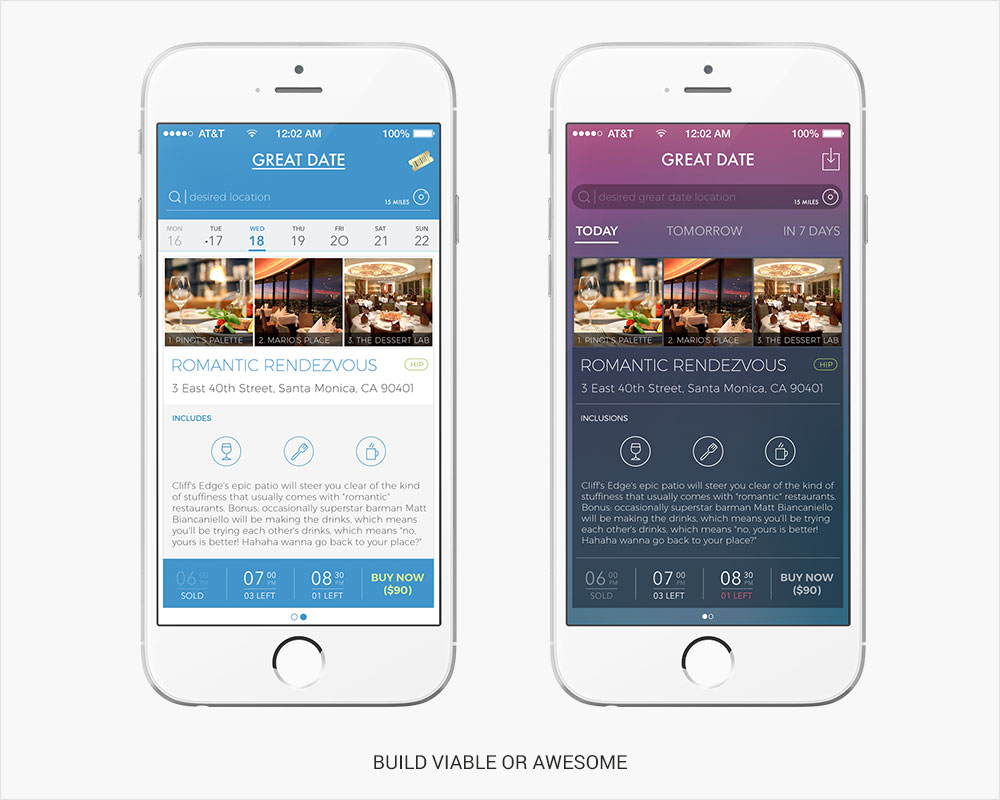
And there’s another reason to consider MAP versus MVP. A minimum viable product is fine in situations where there’s little competition, where users have no pre-existing expectations.
But what about situations where products like the one being developed already exist?
In this case you need to include these pre-existing expectations in your design. It’s not enough to include only basic viability. You need to make sure your user experience stacks up to what users already imagine it should be. And the greater the density of competition, the more awesome you need to make your MAP. Otherwise even early adopters may ignore you.
Consider our car analogy again. Midway through our iterative process earlier we created an MVP product that functioned like a bicycle. If bicycles didn’t already exist then no one would have any expectations for how they should look and feel. You could get away with two wheels bolted roughly to a single metal bar with a plank on top for a seat. But ask yourself if that would satisfy a customer that already had experience with existing bicycles. The answer is a resounding, “no”. In order to satisfy these customers your design needs to be elevated to match their pre-existing expectations. This, in simple terms, is the difference between an MVP and an MAP.
The thing to remember about MAP is that it still agrees that an MVP, in terms of features, should only include those needed for minimum viability. What’s in question is the user experience, the look and feel of the product. With MAP, you need to give this more love than you might with a classic MVP implementation. But otherwise the concept is very much the same.
The market is saturated and there are hardly any new ideas. What that means is, your product needs to kickass, and has to offer a better user experience than other products out there.
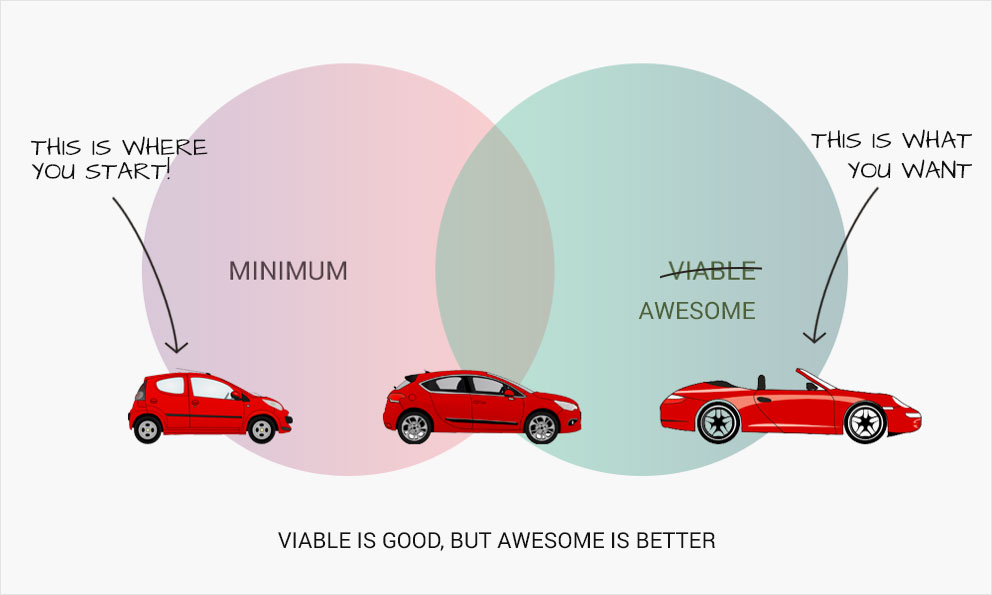
Again, think of the car companies. Every company tries to lure customers by offering a better model than their competition at an almost similar price. If they don’t do it, how long do you think they can survive?
The same logic applies to your startup. If you are trying to build a product where competition exists, you have no choice but to make it awesome. Now, that doesn’t mean that you need to spend drastically more efforts, time and money on making your product awesome. It all starts with planning and research. You need to keep your user in the center and then start thinking around their pain points and possible solutions. In other words, listen to your users and focus on delivering an awesome user experience. It won’t cost a lot, but the number of users adopting for your product will definitely be significantly higher.
So, what are you waiting for? Get iterating!
MVPs, or MAPs if you’re feeling saucy, are the best way for a start-up interested in controlling costs to deliver quality products that they know their customers are interested in. And now that you understand exactly what goes into an MVP you’re ready to get your team working on one for your customers. So get started, and happy iterating! If you need help defining your MVP, feel free to schedule a call with our experts.
The post Build minimum viable or minimum awesome? appeared first on OCDLAB.
]]>Can Bots replace call centers and IVR?
Last night I had a nightmare where an eerie voice was dictating me to press 0 for some weird crap, 1 for something even more bizarre and what not. Yeah, the good old, not-so-Intelligent Voice Response (IVR) systems. The good news is, these IVRs might soon become a thing of the past, as smart voice bots equipped with artificial intelligence (AI) start revolutionizing customer services across various business sectors.

Bots in their various unique avatars, understand natural language and efficiently deliver chat (and voice) services. These contemporary bots are fast, self-learning and are continually getting smarter. While ordering food, making reservations, etc. are the most typical examples, bots can do much more, and with some decent learning data, they can mimic the human conversation to a reasonable accuracy.
Problems with IVR
I am sure, about everyone out there had this experience at least once in the lifetime. You call a customer service number, most likely, already frustrated with whatever problems you were dealing with at that time. Rather than finding a (semi) considerate human being on the other end, a robotic voice starts directing to choose from a plethora of options. Not exactly a good start, right? To make things worse, you can keep pressing nine, but nothing would change until the spooky robotic Satan had its way with you. Of course, the technology was relevant at some point, and perhaps it still helps organizations to categorize the inbound traffic to a certain degree. However, the inconvenience and frustration it causes to the valuable customers are way beyond that helping factor.
According to a Forbes article, a survey by LivePerson revealed that 53% of Americans spend 10-20 minutes on hold every week whereas 86% of people said that they go on hold every time they call a contact center. Needless to say, the industry could use a more humane solution which would not want you to get inside the phone and smash the machine voice on the other end.
Make way for bots
The first-generation commercial bots were developed in the mid-1990s, but have evolved now through the advancement of artificial intelligence (AI), machine learning and higher data processing speeds. These bots are also known as chat bots, smart bots or AI-bots, and can handle repetitive, mundane and time-consuming tasks.
Have you seen FAQ sections on the popular websites? If done right, FAQs could be an invaluable asset for business and services (to reduce the number of support tickets).

It could help to answer a lot of those questions. Of course, that was a human who paid attention and anticipated those questions. In the layman terms, bots could be considered as an advanced version of these FAQs. Throw in some artificial intelligence to a step by step FAQ, and there we have a bot in its minimalistic avatar. Bots understand the natural language conversations and work using a decision tree. Depending on the question, bot answers using a pre-defined sequential flow. This is, of course, a simple example and modern-day bots are way smarter than that. These bots can learn from user responses collected over time. Bigger the data size, brighter the bot. The machine learning plays a huge role here, and while the user sees a smooth-talking bot on the front-end, there is a lot that goes under the hood to make that bot sound so smart.
Organizations utilize machine learning algorithms to develop intuitive interfaces to program dialogues in text mode. Sometimes these do not use AI; instead, they work using rule-based methods. A well-trained chat bot can deliver impressive results ‘just like a real person.’ If open questions are formulated, chat bots provide the answer based on keyword research. Therefore, a chat bot’s ability to interact with a customer is typically restricted to straightforward requests.
Advanced Voice Bots
A significant part of voice bots is derived from text-based chat bots. The most notable advancement is in Natural Language Understanding (NLU)-capabilities that allow software to match the traits of human speech with relevant actions while extracting the specific objects and figures from speech. New machine learning platform help to improve recognition accuracy and enable computer speech sound much like a human.
Latest voice assistants from Google and Amazon combine both bot and speech technologies. Take Google Assistant, which is a two-way conversational voice-activated device and performs day-to-day tasks like booking an appointment. Amazon Echo, a smart speaker, can provide information on news, sports, daily updates as well as play music by connecting to an intelligent AI-based Alexa voice service.
Then there are voice assistances like Siri and Contana for various smartphones that we use on day to day basis without even realizing that it is also a sophisticated bot.
Why should you care?
A 2017 Deloitte study of 450 different contact centers revealed that customer interactions over a voice channel would reduce by 17% by 2019, but, will remain significant at 47%, that is three times higher than chat, web and email, the next largest interaction channels.

It is predicted that implementing self-service, chat bots, voice bots, and automation will not reduce the agent headcounts. Combination of technology and infrastructure is needed to support voice-based services in the contact center. As the competition for automation is higher; today’s IVR systems are undoubtedly going to be replaced with voice bots. If this happens, more agents are required to handle the increasing load of complex tasks.
Nevertheless, bots are becoming common in businesses to provide chat-based services round-the-clock with reduced costs. Statistics from contact center software shows that the average price of customer service via phone is nearly $35 to $50 per interaction, while, the text chat costs are much lesser and is roughly $8 to $10 per session. These chat bots can stay online longer and help customers with necessary information.
IoT focused bots are on the way to revolutionize EAM (Enterprise Asset management), MRO (Maintenance, Repair, and Operations), and FSA (Field Service Automation) markets.
Will Bots Replace IVR?
Interestingly, many businesses are revamping their support desks with the new whiff of AI voice-based services. However, there are some challenges before it could become mainstream. For example, integrating traditional telephone systems to voice-bot platforms is not easy. Then there are issues related to data privacy and compliance. With voice bot, outbound calls in the contact center seem to be a better fit as the agenda is known, but, it is hard in case of inbound calls due to the evolution of unknown conversation scenarios.
Things are changing as we speak and several companies are helping reshape the traditional helpdesks. Voca.ai has recently introduced telephone voice bots for financial call centers. IBM also has made a lot of progress in developing simpler bots.
Voice bots are still in the early days for this technology, particularly in contact centers. While these might not replace agents and IVR anytime soon, it is bound to happen with a mix of technology and humans.
Should you consider a Bot for your business
The short answer is, it depends. Every business has different operational challenges, and as one size doesn’t fit all, there can’t be a generic answer to this question. Book a free consultation with our bot development experts to find out if a bot is a good fit for your business or you are better off with an old-fashioned contact center or IVR.
The post Can Bots replace call centers and IVR? appeared first on OCDLAB.
]]>The post To Hire, or Not to Hire appeared first on OCDLAB.
]]>To Hire, or Not to Hire
Hiring an in-house employee comes with a lot of overhead such as payroll expenses, insurance obligations, and office space or equipment. Thousands of lean startups have figured out a way to bring on a dedicated resource but without the drawbacks and big gamble of an internal employee.
It is a serious matter, but our infographic team has still managed to make it look fun. Enjoy!
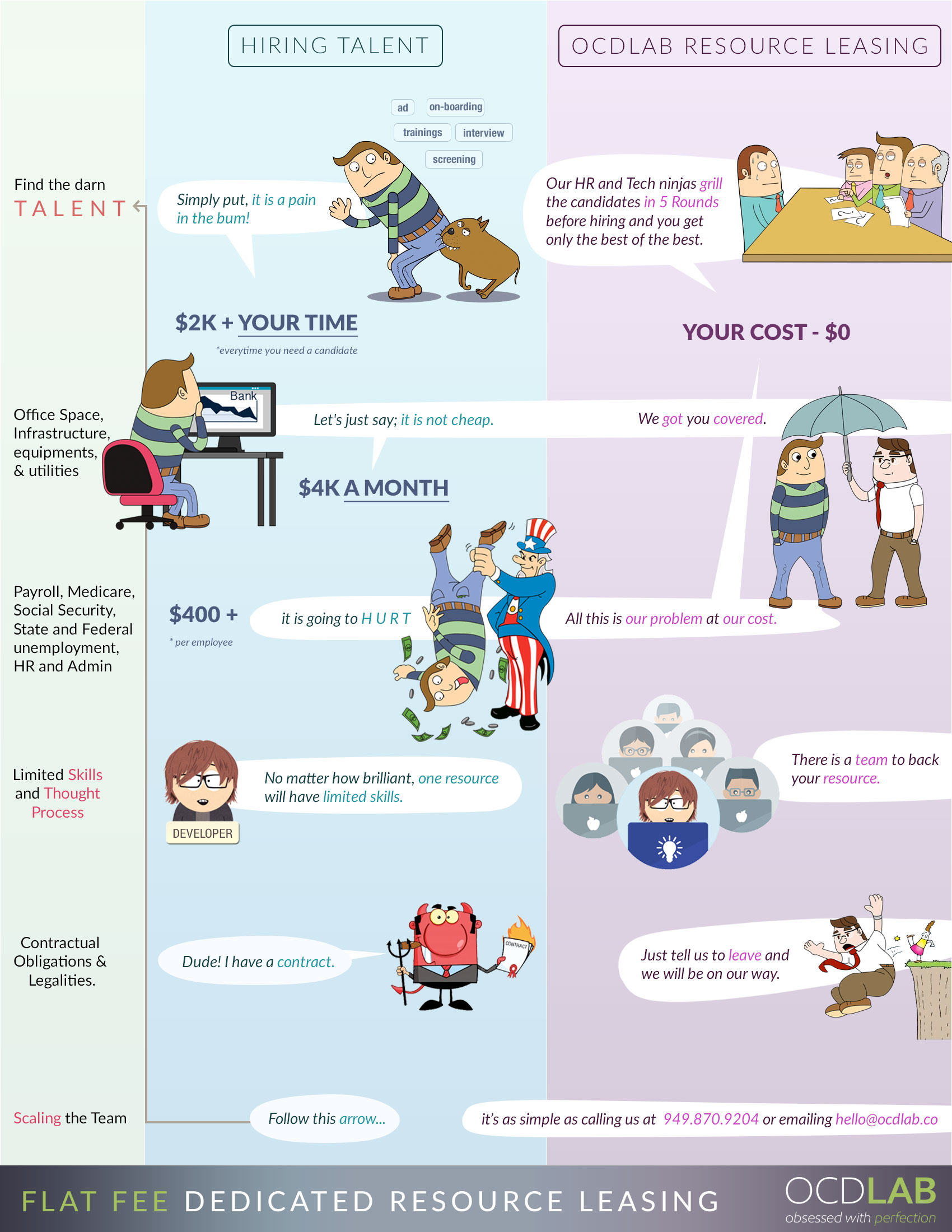
The post To Hire, or Not to Hire appeared first on OCDLAB.
]]>Industrial IoT – why is it important for businesses?
Over the past few years, the world of internet connected products has outgrown its loyal group of tech hobbyists looking to automate their homes to an industry that is at the genesis of seismic growth. While the consumer space is where IoT is the most prominent, with products such as connected thermostats and lightbulbs lovingly commanded by everyone’s AI personality – Alexa, it is the B2B sector where industrial IoT (IIOT) is causing major disruptions and breakthroughs. According to Forbes, companies such as GE are predicted to spend upwards of $60 trillion (yes, trillion with a T) in the Industrial IoT (IIOT) sector alone over the next 15 years. The question is, why?
Industrial IoT is bringing tremendous value to businesses as it allows them to build upon existing assets, devices, and data. By tapping into existing sensor data, businesses are provided with rich analytics that are solving problems in logistics, manufacturing, customer service, and the supply chain which were once thought to be impossible.

Lufthansa Airlines is using IoT to aggregate real-time aircraft, airport, and weather sensor data to improve on-time performance and optimize operations. Lufthansa aggregates the data together to provide excellent customer service experiences. American machinery and equipment manufacturer, CAT, is using IoT to collect real-time health and fuel consumption of their products to shift from a “repair after failure” model to a more proactive “replace before failure” model which allows their customers such as farmers to keep their equipment running longer with less costly repairs. This also provides CAT with a critical point of differentiation in a highly competitive industry.

Speaking of farmers, farms in California are also deploying custom IoT platforms that gather data from soil moisture sensors and weather to water more efficiently. This reduces consumption in drought prone areas. When you add in the preventative maintenance savings of other IoT connected farm equipment (from companies such as CAT), you can see how the deployment of IoT within multiple sectors has led analysts and industry experts to make some bold claims such as “IoT is the next biggest thing after the invention of the computer.”
IoT is still in its infancy but has already proven to be a formidable disruptor and is primed to be a catalyst of innovation for years to come. Companies of all sizes have the opportunity to potentially revolutionize the way they conduct their businesses and boast a sizeable advantage in their respective fields. The question is, how will your company take advantage of it?
We want to know how your company is using or planning on using IoT in your business! Send us your stories: hello@ocdlab.co
The post Industrial IoT – why is it important for businesses? appeared first on OCDLAB.
]]>Apps Start-ups, Do’s & Don’ts
Do you have the next million dollar app idea? Avoid the common pitfalls of first-time entrepreneurs.
1. SHH.. IT’S CONFIDENTIAL
You ask everyone to sign a Non-Disclosure Agreement (NDA) before you reveal even a word about your idea.
Our TakeIt is understandable that you want to protect the idea but app developers are not here to steal it. Sharing your idea can invite useful feedback from experienced insiders who have heard it all.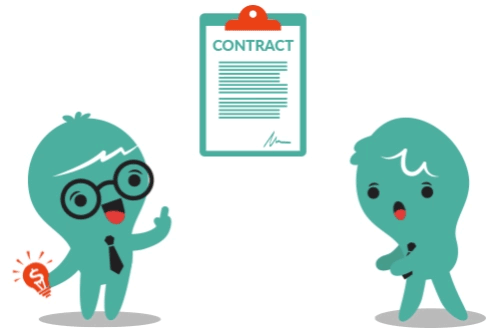
2. UBER OF ....... SOMETHING!
You have picked an incredibly successful app and want to copy it for some other domain or country.
Our TakeWhile this may work for the lucky few, operating on assumptions without investing in adequate research is simply reckless. Before you invest in “Tinder for Shoes” develop a solid marketing strategy that identifies your users, your competition and your value innovation.
3. LET’s TWIST
Usually an extension of 2, so it is still a clone of some other app, but you have some ideas to make it more efficient.
Our TakeWithout having been a part of the brains and teamwork behind those successful apps it’s hard to know the rationale behind the final end product. Again, do your research to see if your proposed improvements would add enough value. Are you sure your idea makes sense, and have you considered all possible use cases?

DOWNLOAD THE POST AS AN INFOGRAPHIC?
4. MIX IT UP
You are trying to pick ideas from multiple successful apps and integrate those to make one app that does it all.
Our TakeIt all depends on how you execute it. Don’t try to solve all the problems in this world at once. Keep it simple and do one thing at a time. Let your users dictate the direction once you launch the MVP.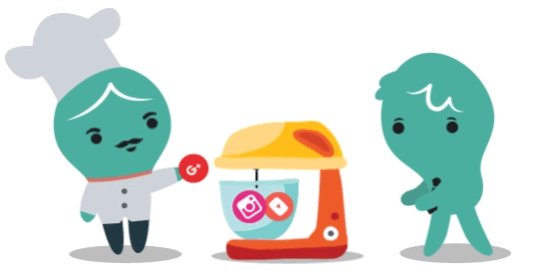
5. KNOW IT ALL
You don’t know what you are talking about but still use the technical jargon and pretend that you know it all. You speak of architecture and frameworks all the time.
Our TakeAgain, trust your developer, they are here to help, so no point pretending and making it more complicated than it is. If anything, you will end up making your own life difficult. Explain your expectations and let everyone contribute.
6. TRUST FUND BABIES
You have an idea AND access to funds so manifesting your idea into reality should be a piece of cake.
Our TakeUsually, startups run into two major issues: the first is funding and the second is successfully executing the idea. You got at least one part covered so do your due diligence and choose the right team to build and market your idea.
7. EQUITY
Hey developer, I have an idea. Do you want to work for equity and be part of this venture?
Our TakeMost developers will directly or indirectly turn down your offer, and even if someone says yes, it is probably not the right move.
The list is long and there might still be some we have missed. It takes all to make this world of start-ups to run. We learn from some, what to be, and from others, what not to be. As long as your idea is changing the world, you are your perfect sort. If you have that idea that the world is waiting for, you have the plan, you have done the feasibility check, talk to serious investors, pitch for your idea and bring it out of paper.
Good luck!For a free consultation, reach out to us at hello@ocdlab.co

DOWNLOAD THE POST AS AN INFOGRAPHIC?
The post Apps Start-ups, Do’s & Don’ts appeared first on OCDLAB.
]]>Wearable Technologies can transform businesses!
The new suite of wearables is the next big leap in technology, integrating these tiny attachments into our everyday lives and businesses. Wearables have evolved from calculating your pulse rates or being an entertainment aide, and there can be a bit of them in every industry. This technology is no longer a thing for the big industries and Wearables are increasingly benefiting small to large operations achieve efficiency and environment interaction.
Health and Wellness
Fitness monitors for staff can keep tabs on their activity levels. This data can be linked to health insurance to cut healthcare costs. Alternatively, organizations can advise Diet management programs to their employees, using wearable data analysis. More and more organizations are using wearables to extend health and wellness amongst its people.
Safety Applications
Industries like mining, with high-risk roles, can use wearables as critical safety tool. A remote technical specialist can train the wearer from afar.
Operational Efficiency
Wearables could track goods being transported across for shelving, eliminating the need for manual marking and providing estimates for completion times. Wearables could also be an effective way to control and manage inventories.
Sales and Marketing
A wearable can help fetch updated product data and create proposals on the go. Field sales staff can present proposals to be signed and actioned instantly. An app in the watch could analyze notes in real time during a marketing meeting; it could return relevant data in visual form, making marketing department smarter.
Warehouse
Large warehouses where task scheduling and location finding is a painful task, wearables could track workers’ whereabouts, guide them to assigned aisles and deploy them for different jobs.
Human resources
For recording time and absentee reports, shift-based staff can mark their attendance or absence using their wearable devices. The data can automatically adjust their payroll. Also, you could manage your employees, productivity and time report with just a tiny device.
The post Wearable Technologies can transform businesses! appeared first on OCDLAB.
]]>